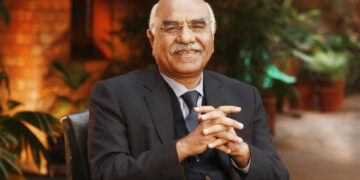
As the 2014 date for the withdrawal of most foreign troops from Afghanistan approaches, the country faces two starkly different futures.
One is a return to the civil war conditions of the 1990s that brought disaster and disunity. In this scenario Afghanistan is abandoned by the international community before falling prey to the machinations of neighbours who bankroll conflict between rival ethnic groups, potentially bringing about the country’s dissolution as a unitary state. The other is the emergence of a stable, prosperous Afghanistan bankrolled by these same neighbours. In this scenario economic self-interests trump old parochial politics.
But how can two such divergent paths proceed from the same Afghan starting point? The neighbours and rivalries are the same, with the Afghans politically fractured and the West marginalised in both cases. The direction depends on whether Afghanistan breaks its longstanding lack of economic integration with the outside world.
The pessimistic path has been well trodden over Afghanistan’s past 35 years. Over the past century and a half a series of Afghan rulers cultivated economic isolationism and religious xenophobia as a protective survival response to successive “Great Game” rivalries over their country. Indeed, Afghanistan had the almost unique misfortune of attracting new geopolitical conflict whenever a previous one subsided.
In the 19th century British India and Czarist Russia both preserved and clashed over Afghanistan as a buffer state between their respective colonial empires. In the 20th century Afghanistan became a proxy battleground in the Cold War. And Afghanistan opened the 21st century under Taleban rule, hosting Osama bin Laden who organised a terrorist attack on the United States. The culmination of each of these geopolitical rivalries was one or more foreign invasions, foreign occupations and foreign withdrawals, of which the 2014 departure will be the fourth for Afghanistan since 1841.
Many analysts assume disorder will ensue with the American withdrawal and predict quick victory for the Taleban over a weak Karzai government in Kabul. Afghan history suggests otherwise. Insurgents do have a splendid track record in getting foreign armies to leave Afghanistan, but tend to struggle in displacing a Kabul government that retains the patronage of a Great Power. Insurgents’ unity against foreigners breaks down when the conflict is only among Afghans.
Supporters of Kabul governments also historically replace their feckless, passive rulers with more active ones. Afghan rulers installed by an invading foreign army fail, but those installed by a withdrawing foreign army succeeded. Only in the absence of any Great Power partnership did Afghanistan fall into anarchy, such as the decade-long civil war in the 1990s that brought the Taleban to power. Such devolution into civil war rather than Taleban victory is the more likely scenario if Afghanistan falls into political violence.
It could take a number of forms. Nuclear-armed Pakistan and India could bring their rivalry into Afghanistan to fight a proxy war with Pakistan supporting the Taleban and India backing the Kabul government. Or, Afghanistan regions could revive their militias and turn a two-party war into a free-for-all. Or the Central Asian states, Russia, India and Iran could back a two-state solution that splits the non-Pashtun north, west and center from the Pashtun south and east, leaving Pakistan with a supersized Federally Administered Tribal Areas.
The positive path harks back to long ago when Afghanistan was the prosperous hub of an international overland Eurasian trade network linking China with South Asia and the Middle East. Today’s model would have China and India making massive investments in rail systems and processing plants to extract Afghanistan’s mineral deposits. Pakistan and India would support construction of pipelines and pylons through Afghan territory to import natural gas from Turkmenistan and hydroelectricity from Tajikistan and Kyrgyzstan. Landlocked Central Asian states would transit Afghan roads and new rail lines to reach ocean ports of Iran or Pakistan.
Few in the West give this possibility much credence, but they have not been following the moves of Afghanistan’s neighbours. With the exception of Pakistan, all have already committed large investments and infrastructure that integrate Afghanistan into their economies, motivated not by charity but pursuit of profits and resources. By way of comparison, the United States has funded $1.6 billion in infrastructure projects since 2006.
The Afghan government plays only a passive role in these developments. Other than balancing out its mineral contracts with both India and China, it has displayed no strategic vision. If Afghanistan wishes to become another Dubai rather than another Somalia, it needs imaginative leaders who offer an economic vision that offers hope to people who have already suffered too much. – KhaleejNews












